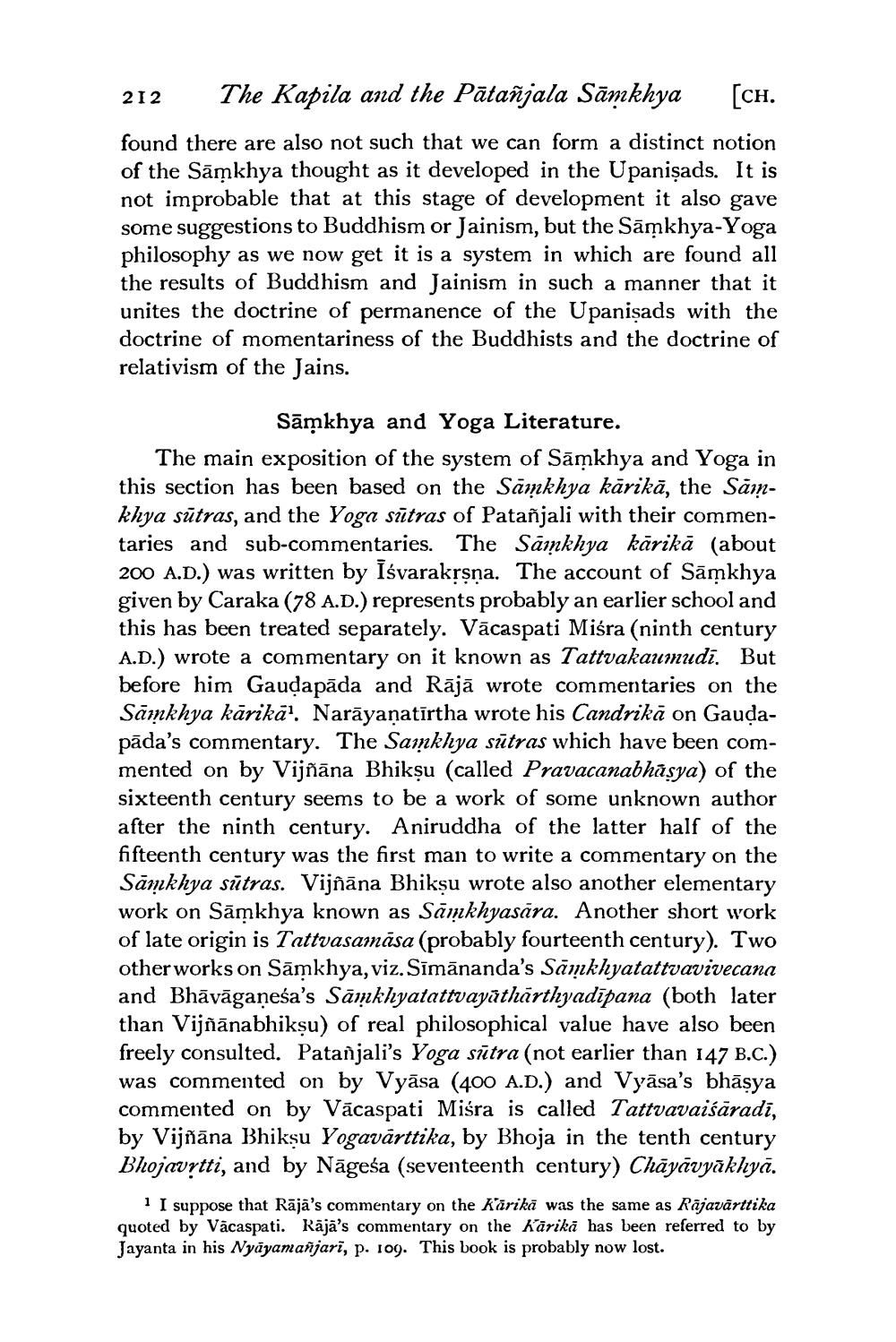________________
The Kapila and the Patanjala Samkhya
[CH.
found there are also not such that we can form a distinct notion of the Samkhya thought as it developed in the Upanisads. It is not improbable that at this stage of development it also gave some suggestions to Buddhism or Jainism, but the Samkhya-Yoga philosophy as we now get it is a system in which are found all the results of Buddhism and Jainism in such a manner that it unites the doctrine of permanence of the Upanisads with the doctrine of momentariness of the Buddhists and the doctrine of relativism of the Jains.
212
Samkhya and Yoga Literature.
The main exposition of the system of Samkhya and Yoga in this section has been based on the Samkhya karika, the Samkhya sutras, and the Yoga sutras of Patañjali with their commentaries and sub-commentaries. The Samkhya kārikā (about 200 A.D.) was written by Isvarakṛṣṇa. The account of Samkhya given by Caraka (78 A.D.) represents probably an earlier school and this has been treated separately. Vacaspati Miśra (ninth century A.D.) wrote a commentary on it known as Tattvakaumudi. But before him Gauḍapāda and Rājā wrote commentaries on the Samkhya karika'. Narāyaṇatīrtha wrote his Candrika on Gauḍapada's commentary. The Samkhya sutras which have been commented on by Vijñāna Bhikṣu (called Pravacanabhasya) of the sixteenth century seems to be a work of some unknown author after the ninth century. Aniruddha of the latter half of the fifteenth century was the first man to write a commentary on the Samkhya sutras. Vijñāna Bhikṣu wrote also another elementary work on Samkhya known as Samkhyasara. Another short work of late origin is Tattvasamāsa (probably fourteenth century). Two other works on Samkhya, viz. Sīmānanda's Samkhyatattvavivecana and Bhāvāgaṇeśa's Samkhyatattvayatharthyadipana (both later than Vijñānabhikṣu) of real philosophical value have also been freely consulted. Patanjali's Yoga sūtra (not earlier than 147 B.C.) was commented on by Vyasa (400 A.D.) and Vyasa's bhāṣya commented on by Vacaspati Misra is called Tattvavaiśāradi, by Vijñāna Bhikṣu Yogavārttika, by Bhoja in the tenth century Bhojavṛtti, and by Nageśa (seventeenth century) Chāyāvyākhyā.
1 I suppose that Rājā's commentary on the Karika was the same as Rājavārttika quoted by Vacaspati. Raja's commentary on the Kärikä has been referred to by Jayanta in his Nyāyamañjarī, p. 109. This book is probably now lost.




